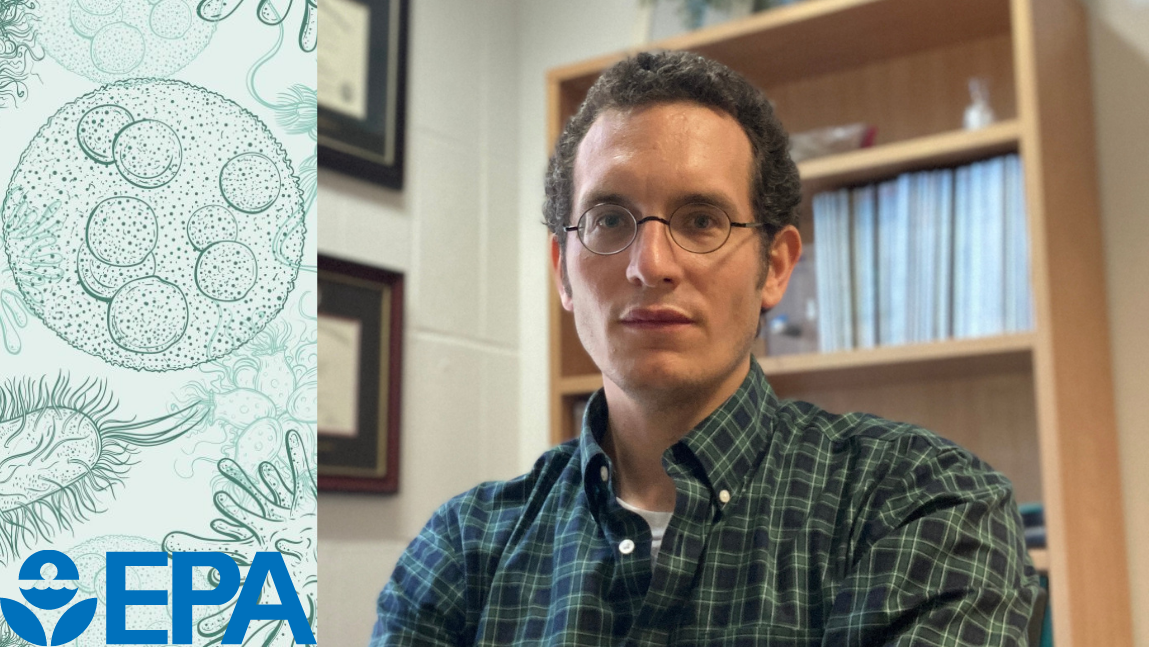“We look forward to addressing multiple aspects of anaerobic digestion to inform farmers and better quantify the overall environmental impacts of food waste management,” said the UVM project’s Principal Investigator Matthew Scarborough (above). “We hope that the continued outreach with Winooski Middle School informs and inspires the next generation to tackle this state-, nation-, and planet-wide challenge.” photo courtesy UVM.
Vermont Business Magazine The US Environmental Protection Agency (EPA) awarded the University of Vermont (UVM) approximately $200,000 in funding to perform a study to assess current capacity at on farm digesters to accept food wastes; the potential impacts of food waste co-digestion on biogas production; and the potential impacts of co-digestion on nutrients and microplastics in digestate. The goal of this grant opportunity nationally is to help reduce food loss and waste and to divert food waste from landfills and incinerators by expanding anaerobic digester capacity in the United States. The grant is one of 11 projects selected for funding in 2022 which include feasibility studies, modeling efforts, demonstration projects, as well as technical assistance and training.
Anaerobic digestion (AD) is a process in which microorganisms break down organic materials, such as food scraps, manure, and sewage sludge, in the absence of oxygen. The process produces biogas, which can be captured and used for energy production, and digestate, a nutrient-rich product used for fertilizer.
“Anaerobic digestion is a technology that creates win-win-win opportunities, utilizing food waste to produce clean energy,” said EPA New England Regional Administrator David W. Cash. “We are proud to recognize UVM’s efforts to use AD to reduce climate change impacts and recirculate valuable nutrients back into our ecosystem.”
By decreasing the amount of wasted food in landfills, AD reduces landfill methane emissions, in turn reducing impacts of climate change. Methane traps 28 to 36 times more heat in the atmosphere over a 100-year period than carbon dioxide. Additionally, AD is a strategy included in EPA’s food recovery hierarchy that is preferable to landfilling and incineration because it reclaims valuable resources, contributing to a circular economy. Keeping food waste out of landfills by transforming it into fuel or fertilizer can save money and reduce environmental impacts.
The University of Vermont plans to perform a study to assess current capacity at digesters to accept food wastes; the potential impacts of food waste co-digestion on biogas production; and the potential impacts of co-digestion on nutrients and microplastics in digestate. In addition, this project will engage directly with students at Winooski Middle School in the city of Winooski, Vt. UVM researchers will continue a recently established a pilot program with teachers at the school that incorporates food waste science and engineering into their curriculum and will be evaluating the learning benefits for students of color.
“We look forward to addressing multiple aspects of anaerobic digestion to inform farmers and better quantify the overall environmental impacts of food waste management,” said the UVM project’s Principal Investigator Matthew Scarborough. “We hope that the continued outreach with Winooski Middle School informs and inspires the next generation to tackle this state-, nation-, and planet-wide challenge.”
For this year’s grant competition, EPA evaluated applicants on how their projects addressed numerous factors resulting from industrial, governmental, commercial, and/or other actions: human health, environmental, social, climate-related, and other cumulative impacts, and accompanying economic challenges of such impacts. EPA prioritized environmental justice by ensuring nearly half of the $2 Million awarded nationally under this grant program this year were to projects or recipients located in underserved communities. Specifically, EPA considered the effects of this program on people of color, low-income, tribal, and indigenous populations, and other vulnerable populations, such as the elderly and children.
Source: University of Vermont 5.18.2022.



